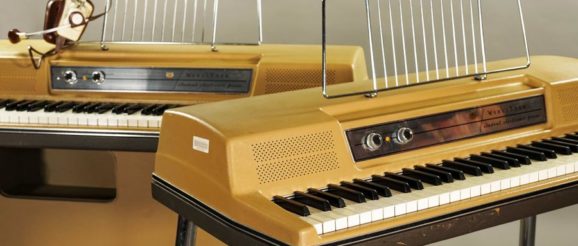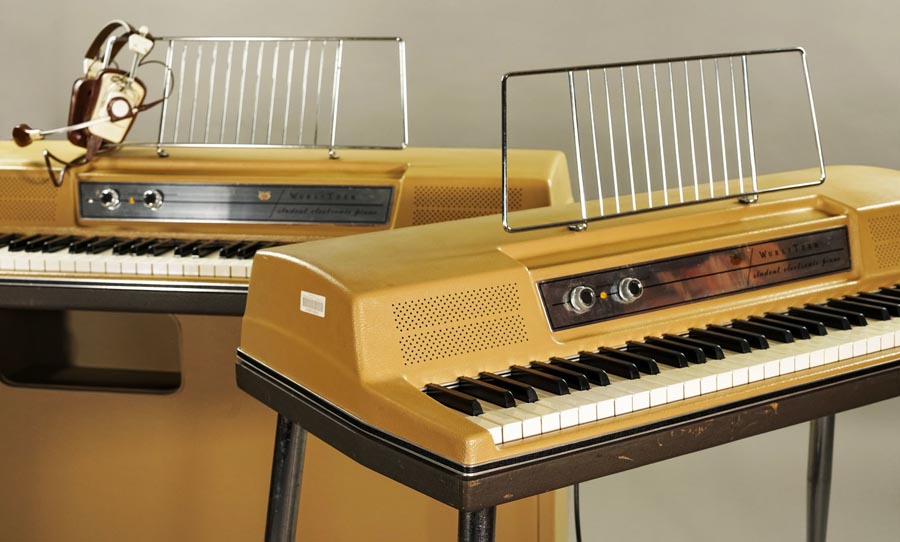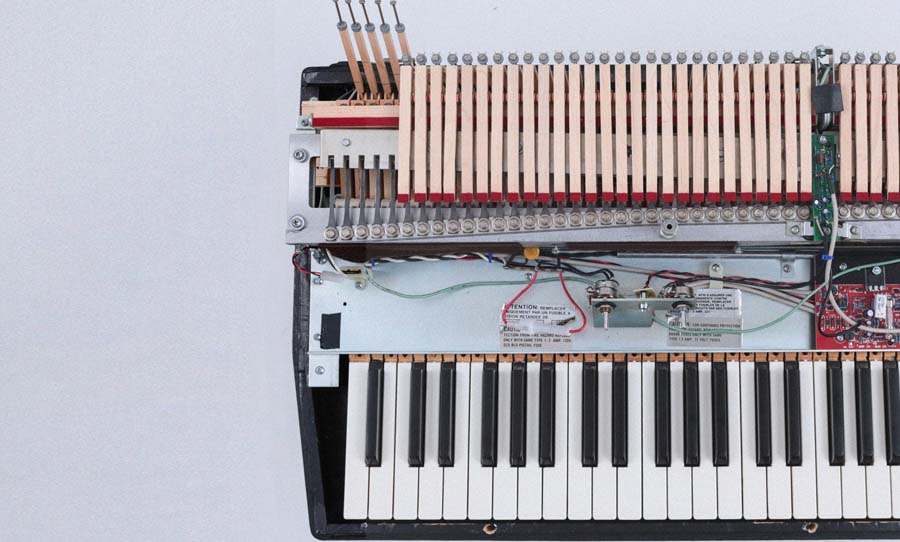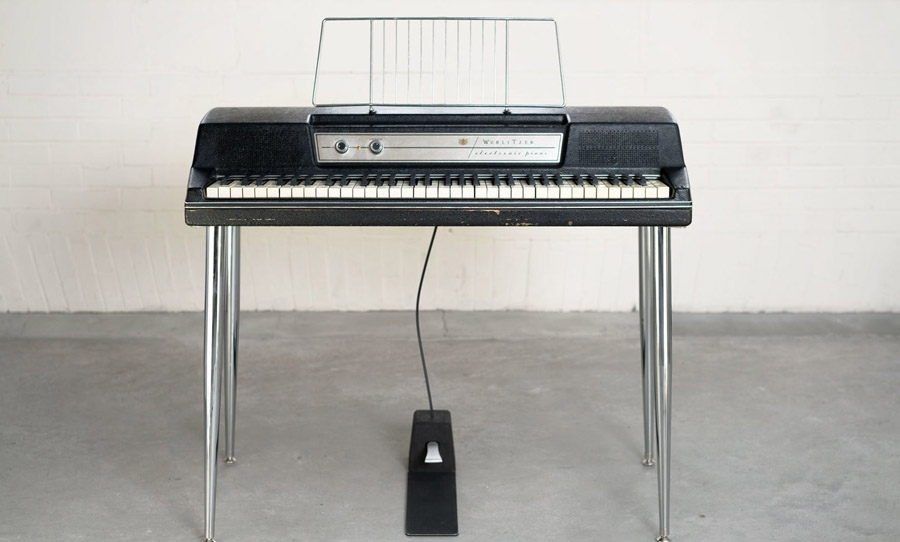The Wurlitzer Electric Piano: A Story of Innovation and Effortless Cool

Before the release of their first electric piano, Wurlitzer had, remarkably, been a company for a hundred years. Beginning its life in the American midwest in 1853, the company gained a foothold in the States by importing orchestral instruments from Europe for resale. Eventually, they got into the manufacturing game.
Technological innovation, though, was always at the heart of the company. Sure, they built acoustic pianos, but they always had an eye for the future and set about developing ways to bring their sounds to wider audiences.
Fast forward to the 1950s, they had theatre and fairground organs, nickelodeons, juke boxes and more in their CV. But far away from the garish tones of the carnival, the electric piano appealed to musicians looking for fresh sound that was steeped in a subdued coolness. The Wurly was born. 
Wurlitzer was a company with an eye to the future. But with their electric pianos, they made a line of instruments that are the embodiment of retro cool.
From early on in their history, the company made a point of embracing the traditional while keeping a forward focus. This above all else was key to the longevity of the brand. Make no mistake though, Wurlitzer did cultivate a good reputation for their craftsmanship and design of acoustic pianos, yet they had a knack for combining this with the commercial imperative of creating products that would become widely popular, not just with musicians.
Catching onto the trend for fairs in the late nineteenth century, they developed the barrel organ – an instrument loud enough to cut through the din of the carousel crowds. With the advent of the moving picture, the “Mighty Wurlitzer” provided the soundtrack, spreading like wildfire along with the booming popularity of cinema.
It wasn’t until 1954 (decades after “talkies” put the monolithic movie organ out of work) that the world saw the first iteration of the Wurlitzer electric piano (or electronic piano as it says on the front panel). This, however, was still a time well before the widespread use of synthesis via electronic circuits. To create its customary tone, it relied on traditional mechanical techniques, combined with an electric guitar style pickup.
When you play the keys on the Wurly, the piano-style hammer strikes a tuned reed. The reeds are fitted with a weight on one end, the momentum causing the reed to vibrate. All the reeds are attached to a pickup plate, which then sends the signal onto the onboard preamp. This reed based system is much more simple than the other great electric piano of the era, the Fender Rhodes. Every tine (a sophisticated kind of tuning fork) on the Rhodes has its own pickup and subsequent wiring. 
Due to this artful combination of mechanics and electronics, the Wurlitzer was gifted with a truly unmistakable sound. It’s trademark aggressive tone – typically described as “bark” – can be recognised in any mix and has gone on to be a signature sound in a multitude of songs.
Wurlitzer electric pianos came in many guises over the course of its production. The early models, marked with variations on the 100 theme, were fitted with tube circuitry (with the exception of the 140). The 200 series replaced the original fibreboard body with a plastic one, with speakers facing the player.
It’s hard to know exactly what the motives are behind Wurlitzer’s development of the electric piano, but one thing’s for sure – the people who played it took the ball and ran with it. The Wurly’s unique sound is especially sensitive to dynamics. Played softly, the sweet bell-like tones ring true from the heart of the instrument. Attacked with aggression and it gives up that saturated bark that its so famous for. The tremolo is also a key to its tonal signature – a simple one knob control that has a fixed rate but adjustable depth.
Throughout the decades, the Wurly has been famously augmented by effects. The distortion that it can dish up naturally is often pushed further with overdrive stompboxes. Its natural sustain is often modulated with the phasers and choruses, its short sharp stabs can linger mysteriously within a cloak of reverb. If it works like and electric guitar and can be plugged into an amp – why not?
In keeping with their philosophy of bringing sound to the masses, the company did their best to make sure that their electric pianos were as widely used as possible. This led to the console model – a non-portable version of the Wurly that was used in music labs in colleges across the United States. The teacher of the class could listen to all students via headphones, students could hear themselves through their own headphones. At its peak, up to 75% of keyboard labs in educational institutions across America used this groundbreaking system.
As you can imagine, this icon of the keyboard continues to thrive in different forms, long after it stopped being produced in the early ‘80s. A host of digital pianos from Nord, KORG, Yamaha, Roland and more feature recreations of the Wurly tone.
In the software scene, the Arturia V collection features a Wurly that you can treat with an entire library of effects, while Soniccouture has taken it a step further by painstakingly sampling the Wurly and presenting it with meticulous realism. This is just the tip of the iceberg when it comes to keeping the sound of this hallowed instrument alive. 
Though the company has had its day, Wurlitzer’s ideas were ahead of the curve, its looks classic. And despite its many commercial successes the company enjoyed throughout its 150-year lifetime, the Wurly was the one that made it cool.
The post The Wurlitzer Electric Piano: A Story of Innovation and Effortless Cool appeared first on Enmore Audio.
